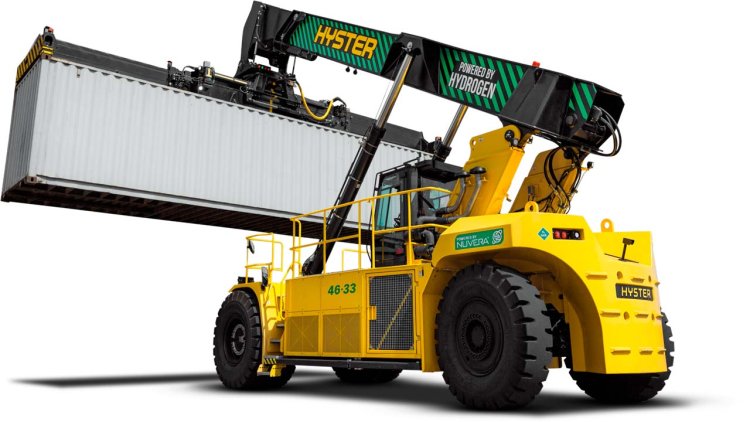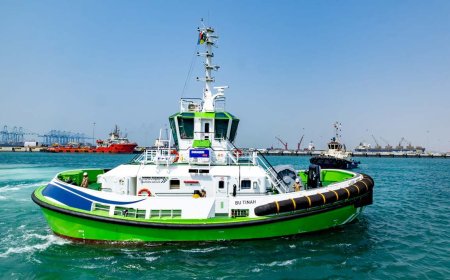The first hydrogen powered container stacker arrives at the Port of Valencia
The hydrogen ReachStacker is the world’s first hydrogen powered ReachStacker and has been developed by Hyster

The Port of Valencia has taken delivery of the hydrogen-powered ReachStacker, developed within the framework of the European H2PORTS project.
This prototype joins the hydrogen-powered tractor unit and the mobile hydrogen supply station (HRS) which will be tested in real operating conditions in the Port of Valencia from this month until December 2024.
The hydrogen ReachStacker is the world’s first hydrogen powered ReachStacker and has been developed by Hyster, a leading forklift truck manufacturer with over 90 years of experience. The machine, which arrived disassembled and transported on three trucks, will be assembled next week and will receive its first hydrogen charge
The refuelling and operational tests will be supervised by the technical team of Hyster, MSC Terminal Valencia, Centro Nacional del Hidrógeno, Carburos Metálicos and the Valenciaport Foundation as coordinator of this project.
The fuel cell powered Hyster ReachStacker is expected to offer comparable performance to a diesel reach stacker in terms of capacity and lift and drive speeds, helping to maintain similar productivity levels, and will feature independent traction and hydraulics with different electric motors to serve different functions.
When combined with the right application and operating intensity, Hyster expects this ReachStacker to provide up to two shifts of operation before a hydrogen refuelling is required. For convenience and flexibility, the Hyster ReachStacker is designed to comply with the standard hydrogen filling station connection (SAE standard), allowing global use. The design includes four hydrogen tanks as a standard option to store hydrogen inside the ReachStacker.
Hydrogen is a clean energy carrier with the advantages of easy storage and, when used, produces no emissions other than heat and water. The hydrogen fuel cell converts H2 into electricity, resulting in zero-emission equipment that, when combined with the use of environmentally friendly hydrogen, is also carbon neutral. This technology has some advantages compared to other zero-emission technologies available, such as pure electric versions. This hydrogen version also has a good range, a short run time, a short fuel consumption and a low fuel consumption.
Valencia, the first port in Europe to incorporate hydrogen technologies to reduce the environmental impact of its operations.
It should be noted that since January, as part of the H2PORTS programme, the Port of Valencia has had a hydrogen supply station (HRS). It is the only installation capable of supplying the needs of the terminals through the mobile hydrogen generator and the fixed tank that stores this fuel.
This hydrogen supply station includes a fixed part dedicated to the reception, storage and compression of hydrogen up to delivery pressure and a mobile part that stores the compressed hydrogen and has a dispenser for refuelling the port machinery.
In April, the 4×4 truck tractor unit powered by green hydrogen was commissioned to move containers within its terminals, to which is now added this container stacker, which will be tested at the MSC terminal.
For Joan Calabuig, president of the APV, “the arrival of this new container terminal yard machine at the Port of Valencia reaffirms our European leadership in decarbonisation and the use of hydrogen as an alternative energy to fossil fuels. It is a success for the Valenciaport Foundation, the Valencia Port Authority and all the companies and institutions collaborating in the H2PORTS project, which we celebrate with the entire port community of Valencia, a community that can be proud of its competitiveness, professionalism and willingness to innovate”.

























































































































































